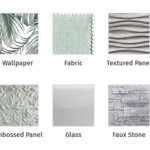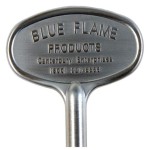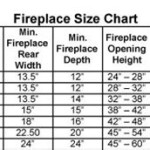```html
Real Flame Fireplace Reviews: A Comprehensive Overview
Real Flame fireplaces have established a presence in the market as a versatile alternative to traditional wood-burning fireplaces. Offering electric, gel fuel, and gas options, they cater to a broad spectrum of consumer needs and preferences. This article aims to provide a detailed review of Real Flame fireplaces, exploring their various product lines, assessing their performance, evaluating their aesthetic appeal, and considering key factors relevant to potential buyers. By examining these aspects, a comprehensive understanding of the value proposition offered by Real Flame fireplaces can be achieved.
Product Line Diversity: Exploring the Range of Options
Real Flame distinguishes itself with a diversified product line, encompassing electric fireplaces, gel fuel fireplaces, and gas fireplaces. This variety allows consumers to select a fireplace that aligns with their specific requirements regarding installation ease, fuel source preference, and desired heating capacity.
Electric Fireplaces: These models offer convenience and ease of installation. They do not require venting, making them suitable for various room configurations. Electric fireplaces typically utilize LED technology to simulate flames, offering adjustable brightness and color settings. Many models incorporate a supplemental heating unit, providing localized warmth. Key features to consider include the BTU output of the heater, the realism of the flame effect, and the overall design aesthetics. Some higher-end models incorporate features like remote control operation, timer functions, and multiple flame settings.
Gel Fuel Fireplaces: Gel fuel fireplaces offer a unique aesthetic, providing a real flame without the need for a gas line or electricity. These fireplaces burn cans of solidified gel fuel, producing a clean-burning flame that generates heat. The primary advantage of gel fuel fireplaces is their portability and ease of use. They can be placed virtually anywhere in a room, provided adequate ventilation is present. Considerations include the cost of gel fuel refills, the heat output compared to electric or gas models, and the visual appeal of the flame. While gel fuel offers a genuine flame, it may not produce the same level of heat as other options.
Gas Fireplaces: Real Flame also offers gas fireplace options, typically requiring professional installation due to the gas line connection. These fireplaces can utilize either natural gas or propane as a fuel source. Gas fireplaces provide a consistent and controllable heat output, making them suitable for larger spaces. Venting requirements are a critical factor, with options including direct vent and vent-free models. Key considerations include the BTU rating, the venting configuration, the safety features incorporated into the design, and the overall efficiency of the fireplace. Gas fireplaces often offer a more realistic flame appearance compared to electric models, and can provide significant heating capacity.
Performance Evaluation: Assessing Heating Capacity and Flame Realism
The performance of a Real Flame fireplace is contingent upon the specific model and fuel type. Assessing heating capacity and flame realism are critical factors in determining overall satisfaction.
Heating Capacity: Electric fireplaces typically offer supplemental heating, with BTU output varying depending on the model. The heating capacity is generally sufficient for smaller rooms or for providing localized warmth. Gas fireplaces, on the other hand, offer a significantly higher BTU output, making them suitable for heating larger areas. Gel fuel fireplaces provide a more modest heating effect, primarily contributing to ambiance rather than significant room heating. Evaluating the BTU rating and the square footage the fireplace is intended to heat is crucial for selecting an appropriate model.
Flame Realism: The realism of the flame effect varies considerably between the different fuel types. Gas fireplaces generally offer the most realistic flame appearance, replicating the look and feel of a traditional wood-burning fireplace. Electric fireplaces utilize LED technology to simulate flames, with varying degrees of realism. Some models incorporate advanced features like flickering flame effects and ember beds to enhance the visual appeal. Gel fuel fireplaces offer a genuine flame, albeit a smaller and more contained one. The perceived realism of the flame is a subjective factor, but comparing models side-by-side can aid in making an informed decision.
Efficiency: Gas fireplaces, particularly those with direct vent technology, can achieve high levels of efficiency, converting a significant portion of the fuel into usable heat. Electric fireplaces are generally considered to be 100% efficient, as all of the electrical energy consumed is converted into heat. However, the overall cost of operation depends on the electricity rates. Gel fuel fireplaces are less efficient than gas or electric options, as a portion of the heat is lost through the combustion process. Considering the long-term operating costs associated with each fuel type is important for making an economically sound decision.
Aesthetic Appeal and Design Considerations
Real Flame fireplaces are available in a variety of styles and designs, ranging from traditional mantels to modern wall-mounted units. Aesthetic appeal is a significant factor for many consumers, as the fireplace often serves as a focal point in a room. Design considerations include the overall style of the fireplace, the materials used in its construction, the color and finish, and the size and proportions.
Mantel Designs: Many Real Flame electric and gel fuel fireplaces are available with decorative mantels, ranging from classic designs to contemporary styles. Mantel materials include wood, MDF, and composite materials. The design of the mantel should complement the existing décor of the room, and the size should be appropriate for the space. Considerations include the height and width of the mantel, the detailing and ornamentation, and the overall finish.
Wall-Mounted Units: Wall-mounted electric fireplaces offer a modern and space-saving alternative to traditional mantel designs. These units are typically sleek and minimalist, with a focus on clean lines and contemporary finishes. Wall-mounted fireplaces can be easily installed on any wall, providing a focal point without taking up floor space. Considerations include the dimensions of the unit, the mounting hardware required, and the visibility of the electrical cord.
Fireplace Inserts: Real Flame also offers fireplace inserts, designed to be installed into existing fireplace openings. These inserts can be used to convert a traditional wood-burning fireplace into an electric or gas fireplace, providing a more convenient and efficient heating option. Considerations include the dimensions of the existing fireplace opening, the venting requirements of the insert, and the compatibility of the insert with the existing chimney.
Material Quality and Durability: The quality of the materials used in the construction of a Real Flame fireplace is a key factor in determining its long-term durability. Solid wood mantels are generally more durable than MDF or composite materials. The quality of the hardware and the construction techniques also contribute to the overall longevity of the fireplace. Reading customer reviews and examining the product specifications can provide insights into the quality and durability of specific models.
Safety Features and Considerations
Ensuring the safe operation of a fireplace is paramount. Real Flame incorporates various safety features into its fireplace designs, but understanding these features and adhering to safety guidelines is essential.
Overheat Protection: Electric fireplaces typically incorporate overheat protection mechanisms, which automatically shut off the unit if it detects excessive heat. This feature helps to prevent fires and protect the unit from damage. Regularly inspecting the air vents and ensuring they are free from obstructions is important for maintaining proper airflow and preventing overheating.
Cool-Touch Glass: Many electric fireplaces feature cool-touch glass, which helps to prevent accidental burns. While the glass may still become warm to the touch, it is designed to remain at a safe temperature. However, it is still recommended to keep children and pets away from the fireplace when it is in operation.
Venting Requirements: Gas fireplaces require proper venting to ensure the safe removal of combustion byproducts. Direct vent fireplaces utilize a sealed system that draws air from the outside and vents exhaust gases directly outside. Vent-free fireplaces, on the other hand, do not require venting, but they must be used in a room with adequate ventilation to prevent the buildup of carbon monoxide. Following the manufacturer's instructions regarding venting requirements is crucial for safe operation.
Carbon Monoxide Detectors: When using a gas or gel fuel fireplace, it is essential to install a carbon monoxide detector in the room. Carbon monoxide is a colorless, odorless gas that can be produced by incomplete combustion. Carbon monoxide detectors can provide an early warning of dangerous levels of the gas, allowing occupants to evacuate the area.
Fuel Storage and Handling: When using a gel fuel fireplace, it is important to store fuel canisters in a cool, dry place away from heat and flame. Never attempt to refill empty fuel canisters, and always follow the manufacturer's instructions for safe handling and disposal. Improper storage or handling of gel fuel can pose a fire hazard.
Professional Installation: Gas fireplaces typically require professional installation by a qualified technician. This ensures that the gas line is properly connected and that the venting system is installed correctly. Attempting to install a gas fireplace without professional assistance can be dangerous and may void the warranty.
Cost Analysis: Evaluating the Total Cost of Ownership
The cost of a Real Flame fireplace extends beyond the initial purchase price. Evaluating the total cost of ownership requires considering factors such as installation costs, fuel costs, and maintenance expenses.
Purchase Price: The purchase price of a Real Flame fireplace varies depending on the model, fuel type, and features. Electric fireplaces tend to be the most affordable option, while gas fireplaces typically have a higher upfront cost due to the complexity of the installation. Gel fuel fireplaces fall somewhere in between.
Installation Costs: Electric fireplaces are relatively easy to install, often requiring only plugging into an electrical outlet. Gel fuel fireplaces also require minimal installation. Gas fireplaces, however, typically require professional installation, which can add significantly to the overall cost. The cost of installation will depend on the complexity of the job and the local labor rates.
Fuel Costs: Fuel costs vary depending on the fuel type and the frequency of use. Electricity costs depend on the local electricity rates and the BTU output of the heater. Gel fuel costs depend on the price per canister and the burn time. Gas costs depend on the local gas rates and the BTU rating of the fireplace. Comparing the cost per BTU for each fuel type can help to estimate the long-term operating costs.
Maintenance Expenses: Electric fireplaces typically require minimal maintenance, primarily involving cleaning the exterior and occasionally replacing the LED bulbs. Gas fireplaces require periodic maintenance, such as cleaning the burner and inspecting the venting system. Gel fuel fireplaces require minimal maintenance, but it is important to clean up any spills or residue.
Long-Term Value: Considering the long-term value of a Real Flame fireplace involves evaluating its durability, efficiency, and aesthetic appeal. A well-maintained fireplace can provide years of enjoyment and can add value to a home. Choosing a model that is both functional and aesthetically pleasing can contribute to its overall value.
```
Real Flame Thayer 54 In Electric Fireplace White 5010e W The Home Depot

Reviews For Real Flame Silverton 48 In Electric Fireplace White Pg 1 The Home Depot

Reviews For Real Flame Callaway 63 In Grand Electric Fireplace Chestnut Oak Pg 1 The Home Depot

Real Flame Cau Electric Fireplace Brown Target

Real Flame 47 5 In W White Fan Forced Electric Fireplace The Fireplaces Department At Com

Real Flame Cau Electric Corner Fireplace In White Com

Real Flame Aspen Electric Fireplace In Gray Barnwood Com

Reviews For Real Flame Silverton 48 In Electric Fireplace White Pg 1 The Home Depot

Real Flame Emerson 55 87 In Rustic White Infrared Electric Fireplace 6720e Rw Réno Dépôt

Customer Reviews Real Flame Harlan Electric Fireplace White 8060e W Best Buy








